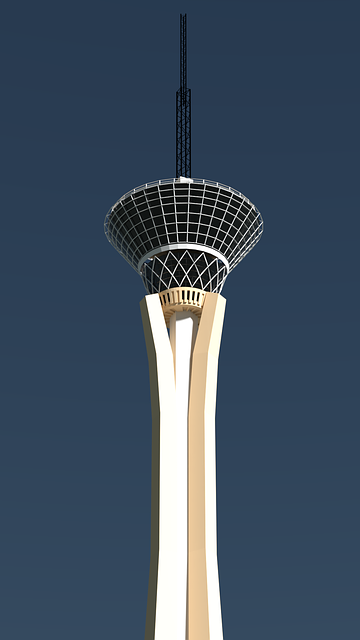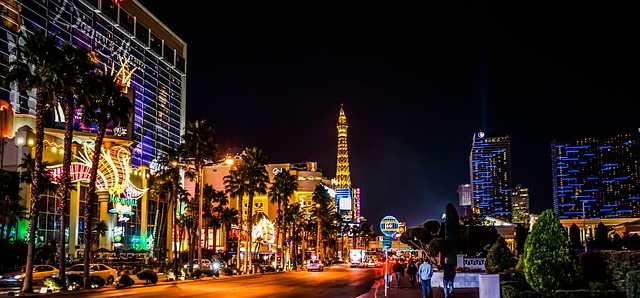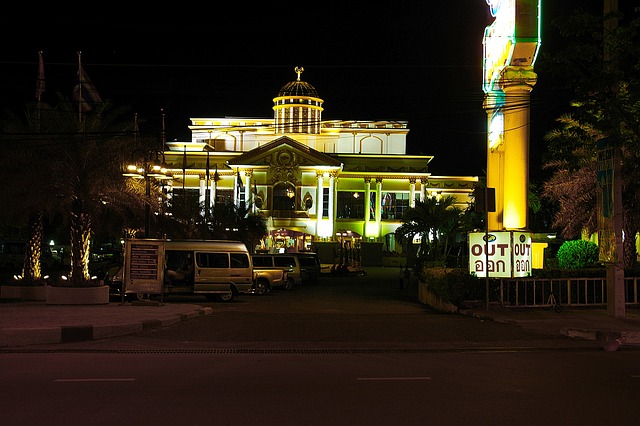Brick and Mortar Casinos have evolved from simple gambling halls to entertainment hubs offering diverse amenities like restaurants, bars, retail stores, and entertainment venues. Strategic design elements like lighting adjustments, color psychology, and space configuration enhance gameplay and guest experience, fostering an immersive atmosphere. Architectural features such as lighting, acoustics, and layout prolong visitor stays and encourage social interaction and loyalty among frequent players.
Casino architecture transforms spaces into vibrant hubs of excitement, reflecting the evolution of brick-and-mortar casinos over time. From classic elegance to modern sophistication, design elements play a pivotal role in creating immersive experiences that attract players. This article explores the intricate relationship between casino architecture and player engagement, delving into key trends that enhance the physical casino environment. Discover how thoughtful design can elevate the traditional brick-and-mortar casino experience, captivating patrons and fostering a vibrant atmosphere.
- The Evolution of Brick and Mortar Casinos
- Design Elements Shaping Casino Spaces
- Enhancing Player Experience in Physical Casinos
The Evolution of Brick and Mortar Casinos

The traditional Brick and Mortar Casinos have undergone a remarkable transformation over the years, evolving from simple gaming halls to sophisticated entertainment destinations. In the early days, casinos were primarily focused on gambling, with basic design elements catering to the core activities of betting and playing games like poker or roulette. These venues often featured plush carpets, elegant furniture, and intricate decor, setting a luxurious tone for patrons.
However, as the industry grew, so did the innovation in casino architecture. Modern Brick and Mortar Casinos now incorporate diverse amenities to cater to a broader range of customers. From lavish restaurants and bars to high-end retail stores and entertainment venues, these casinos have become multi-faceted complexes that offer an immersive experience beyond just gambling. This evolution reflects a strategic shift to attract a wider demographic, ensuring the longevity and success of land-based casino operations in today’s competitive market.
Design Elements Shaping Casino Spaces

The design elements shaping casino spaces in brick and mortar casinos go beyond mere aesthetics, serving as strategic tools to enhance gameplay and guest experience. Careful consideration is given to lighting, with well-lit areas encouraging visibility and security while dimmer zones create a sense of mystery and allure, guiding patrons towards high-traffic or less popular games. Color psychology plays a significant role too; warm tones can invigorate and draw players in, whereas cooler hues may evoke calmness, affecting the overall mood and energy levels within the casino floor.
Space configuration is another critical factor. Strategic placement of tables, slots, and other gaming areas, coupled with clever use of physical barriers like walls or dividers, helps create distinct zones for different types of games, managing crowd flow and minimizing distractions. This thoughtful layout not only maximizes capacity but also ensures that each area offers a unique ambiance, catering to diverse player preferences and fostering an immersive casino atmosphere.
Enhancing Player Experience in Physical Casinos

The physical casino architecture plays a pivotal role in enhancing the player experience at brick-and-mortar casinos. Carefully designed spaces that incorporate strategic lighting, acoustics, and layout optimizations create an immersive environment that encourages patrons to stay longer and enjoy their time. For instance, well-lit gaming tables and eye-catching signage guide players through the casino floor, while themed areas and comfortable seating zones foster social interactions and relaxation.
Moreover, innovative design elements like interactive art installations, luxurious dining options, and captivating entertainment venues contribute to a memorable experience. By combining aesthetics with functionality, casino architects ensure that every corner of the establishment invites exploration and play. This strategic approach not only attracts more visitors but also builds loyalty among frequent players who seek unique and engaging environments within brick-and-mortar casinos.
Casino architecture, as seen in brick-and-mortar establishments, has evolved significantly over time, incorporating design elements that not only captivate but also enhance the player experience. From classic elegance to modern opulence, these spaces are meticulously crafted to create an immersive environment. By understanding the evolution and current trends, architects and casino operators can continue to innovate, ensuring brick-and-mortar casinos remain vibrant destinations, offering unique experiences that digital alternatives struggle to replicate.






